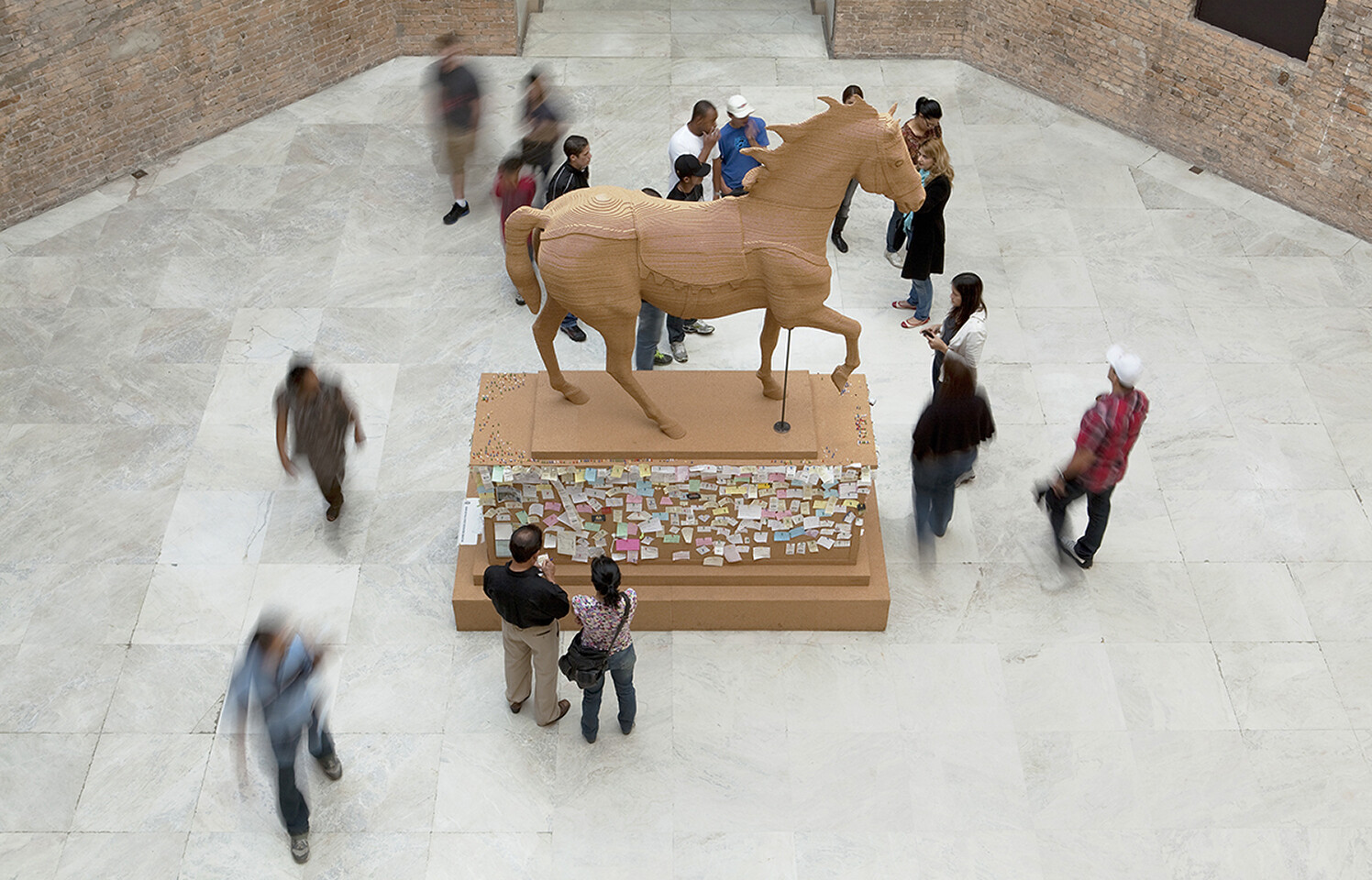1. Why did you decide to go into teaching?
In 1994, Jack Risley asked me to teach a class at NYU, and I found out, much to my own surprise, that I love teaching. I have grown a tremendous amount as an artist and a person through teaching. It has kept me in constant dialogue with others as well as provided me with a mirror for self-awareness. The classroom is a context where I can gain distance from my own work. Teaching allows me to empathize, accept, and understand work that is radically different than mine. This change in perspective offers the perfect antidote to the state of mind I bring to the studio—a mindset that is by necessity much more focused and narrow.
2. What drew you to your school and what is your teaching philosophy?
Since that first teaching job, I have not stopped teaching. I have taught a little bit of everything including graduate critiques, courses on the performative object, beginning drawing, advanced sketching, and different levels of sculpture. I developed a robotics class, studio and seminars on public art, and more recently, courses on publishing and the public sphere. I have also taught at a variety of schools and have observed what makes some schools work better than others. I have stayed attentive to the curricula, asking: What types of foundation courses seem to work best? As art practices continue to expand, what baseline of techniques should we provide undergraduates? And as a plurality of ideas and ideologies refuses to settle, what minimum and best theoretical base should we teach graduates? However, the question that still inspires me the most is how visual arts might fit within education at large (and beyond academia, in society at large). During my own undergraduate years, I took courses in comparative literature, linguistics, mathematics, intellectual history, and not necessarily because I wanted to be a writer, linguist, or mathematician, etc. Most importantly, these classes had something to offer those outside the field while maintaining the rigor expected of those majoring in those subjects. Likewise, I strive to make my classes simultaneously enriching for future artists as well as the curious visitor from another field. This is particularly meaningful when one considers how few people who study art actually become artists. Ideally then, an art education should be useful for those who choose to follow different paths. Art education can teach students a useful approach to life, one where there is a relationship between meaning and form; one where they understand their capacity to shape that relationship.
I was drawn to Cornell because it is a research university where every department is dedicated to teaching, research, and creating new knowledge in their field. In general, this is the perfect environment for what I described above. Specifically, the Department of Art sits within the College of Architecture, Art, and Planning (AAP), and in researching the position I read their mission statement: “At the College of Architecture, Art, and Planning, we prepare our students to address the greatest challenges of the 21st century through applied research, creative practice, and community-engaged planning. We encourage imagination, technical creativity, critical thinking, and embrace transdisciplinary approaches to building a more beautiful, sustainable, and equitable world.” This sense of ethical purpose drew me to the school.
Read more of Paul Ramírez Jonas’s Office Hours on School Watch.
Office Hours is a new questionnaire series that gathers insights on teaching from artists. In response to ten prompts, educators reflect on the discourses and approaches that animate their teaching, share their visions for the future of art education, and offer advice for students navigating the field of contemporary art.
School Watch presents critical perspectives on art and academia. Featured profiles, surveys, and dialogues consider education in fine art, curating, and critical theory, as well as the ideas and conditions that influence practice.





